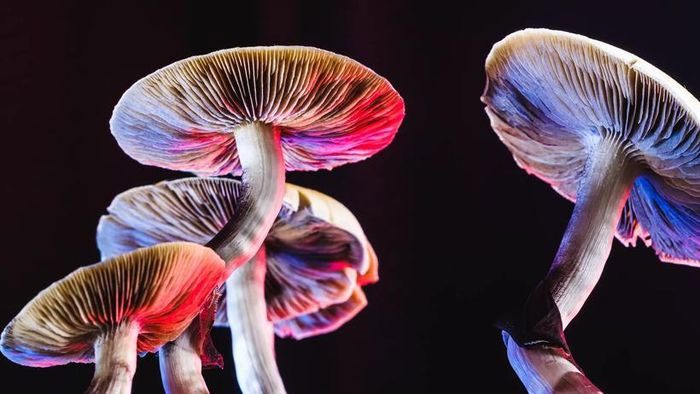A New Study Reveals That Fungi Can Cool Themselves by “Sweating”.
This discovery sheds light on a potential fundamental aspect of fungal biology and may have implications for human health.
Dr. Arturo Casadevall, a microbiologist at Johns Hopkins University and one of the study’s authors, stated: “For me, it is a very interesting phenomenon that is not easily explained.”

Fungi tend to be cooler than their environment.
Previously, the lead author of the study, Radames Cordero, a microbiologist at Johns Hopkins University, used infrared cameras to photograph fungi in the forest.
Infrared cameras can visualize the relative temperature of each object in the image. Cordero noticed something unusual: the mushrooms appeared to be cooler than their surrounding environment.
Scientists have observed that fungi generally tend to be cooler than their surroundings. However, Casadevall mentioned that he had never heard of this phenomenon before. Therefore, the team decided to investigate whether this cooling effect occurs in all types of fungi.
In addition to photographing fungi, the researchers cultivated and photographed various types of fungi in the laboratory. They observed a similar phenomenon, which even occurred with the cultivation of Cryomyces antarcticus – a type of fungus that grows in Antarctica.
Fungi seem to cool down through evaporation from their surfaces, which essentially means they are sweating. Subsequently, the research team created a type of air conditioning system powered by mushrooms.
They placed Agaricus bisporus mushrooms into a foam box with holes on each side. A fan was positioned outside one of the holes. Then, the mushrooms were placed inside a larger container, and the fan was turned on to circulate air over the mushrooms.
After 40 minutes, the air inside the larger container dropped from about 100 degrees F (37.8 degrees C) to approximately 82 F (27.8 degrees C). The mushrooms cooled the temperature through evaporative cooling, using heat from the air to convert liquid water into vapor.
The scientists still do not fully understand why fungi want to stay cool. However, the authors speculate that this phenomenon may relate to creating optimal conditions for spore formation or may help fungi disperse spores by altering temperature, thus generating small air currents that can blow the spores around.
So far, this new discovery raises more questions than answers. “I think that if we can understand why fungi sweat, we will learn a lot,” said Casadevall.


















































